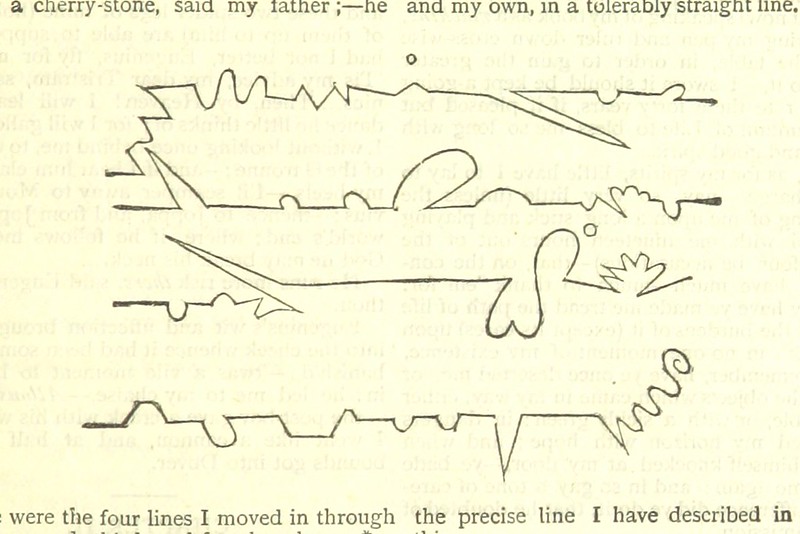Published in five instalments between 1759 and 1767, Tristram Shandy made its author, who had previously been entirely unknown in the literary world, suddenly famous far beyond the borders of Great Britain. The novel is an early masterpiece of comic writing and excels in experimental narrative. Published only 40 years after Defoe`s Robinson Crusoe – which is often regarded as the first proper novel in English – Sterne deliberately subverts the established conventions of the fairly young genre, anticipating many traits of postmodern writing: A remarkable experiment in form, for instance, is the playful way with the materiality of the medium of the book is used. In Tristram Shandy, the typeface itself is just as important as the content of what is written - Sterne makes unprecedented use of the non-linguistic design possibilities of print. Two pages are coloured entirely black, in memory of the deceased Yorick; later, one page is left white, and the reader is invited to draw their own image of the widow Wadman on it.
|
| Literatur | In this seminar, we will closely read Sterne’s seminal novel, focusing on, among other things, its representation of grotesque bodies, its parodies of scholarship, and its medial-material self-reflexivity. Please buy and read the following edition of the novel before the start of term: Laurence Sterne, The Life and Opinions of Tristram Shandy, Gentleman. Ed. Ian Campbell Ross. Oxford: OUP, 2009. (= Oxford’s World Classics) ISBN 978-0199532896 |
|---|

